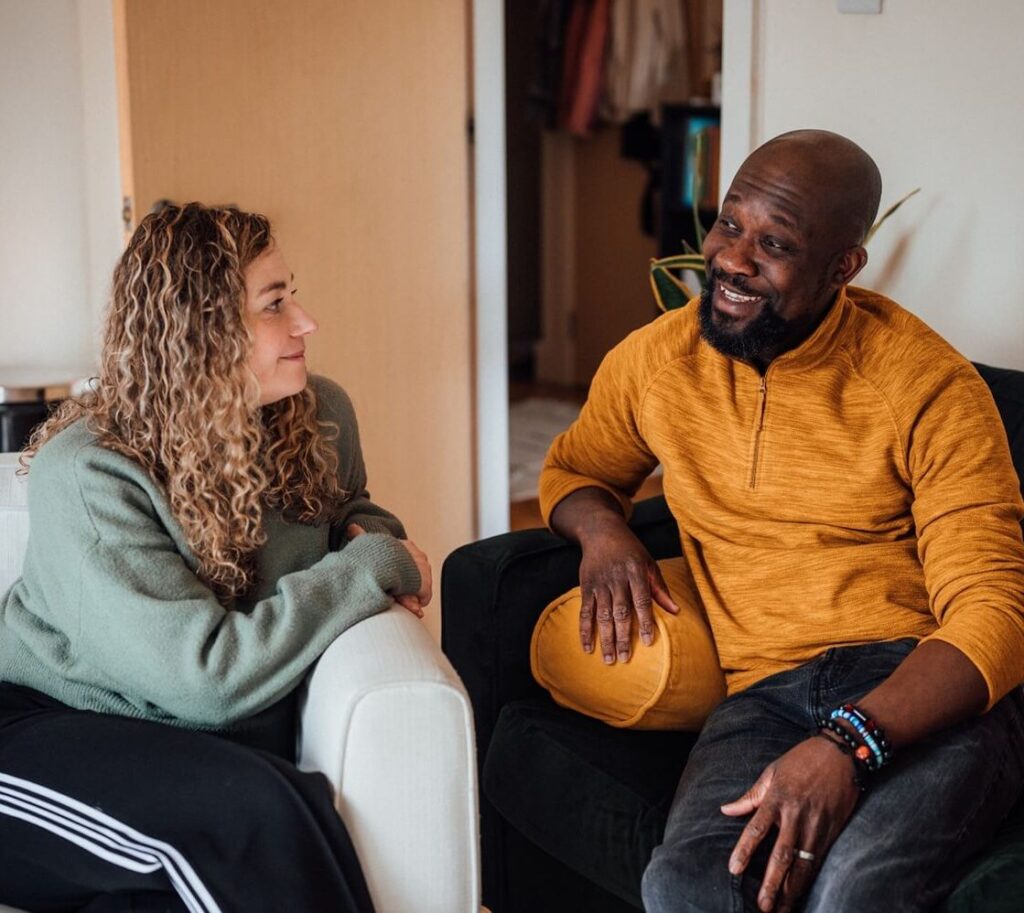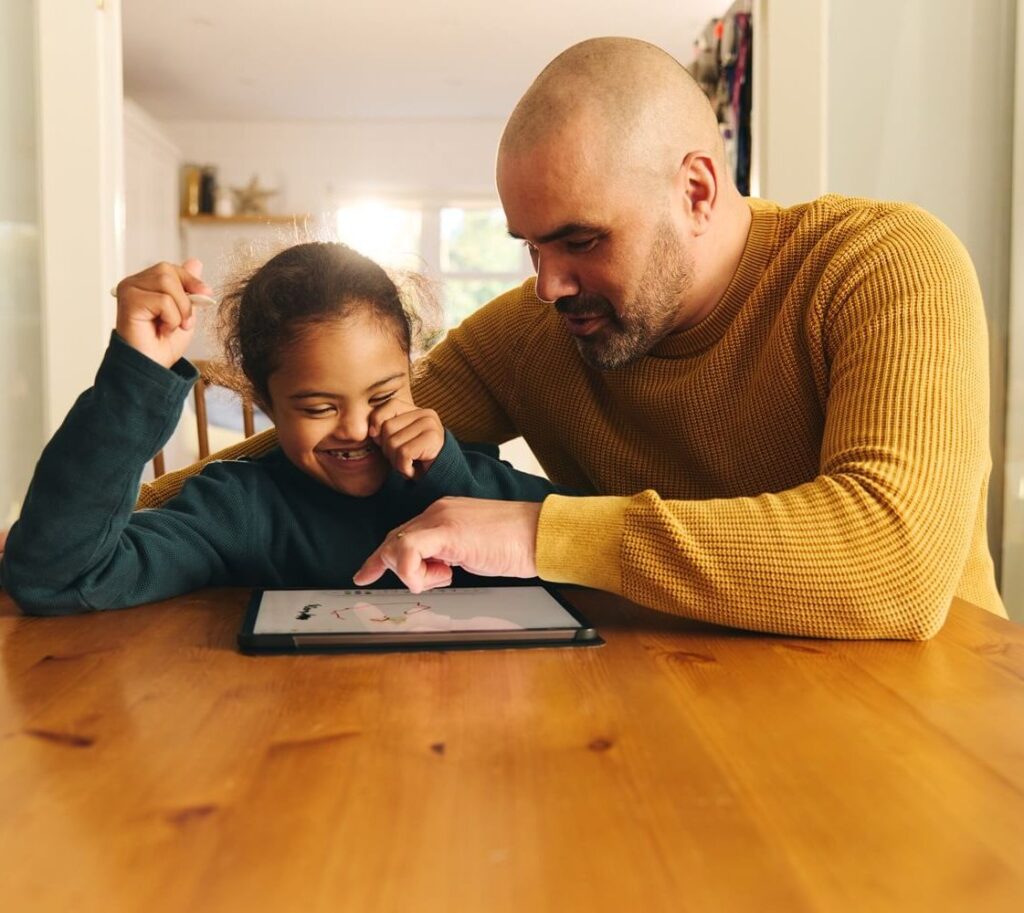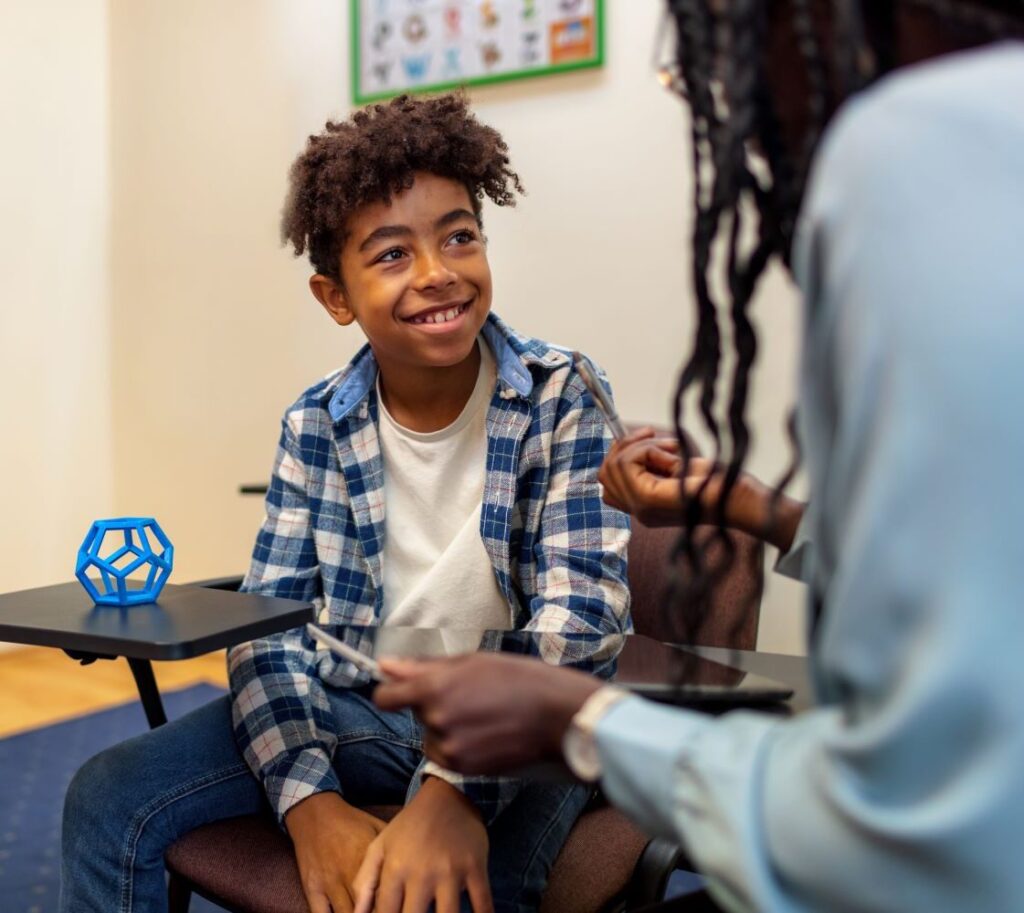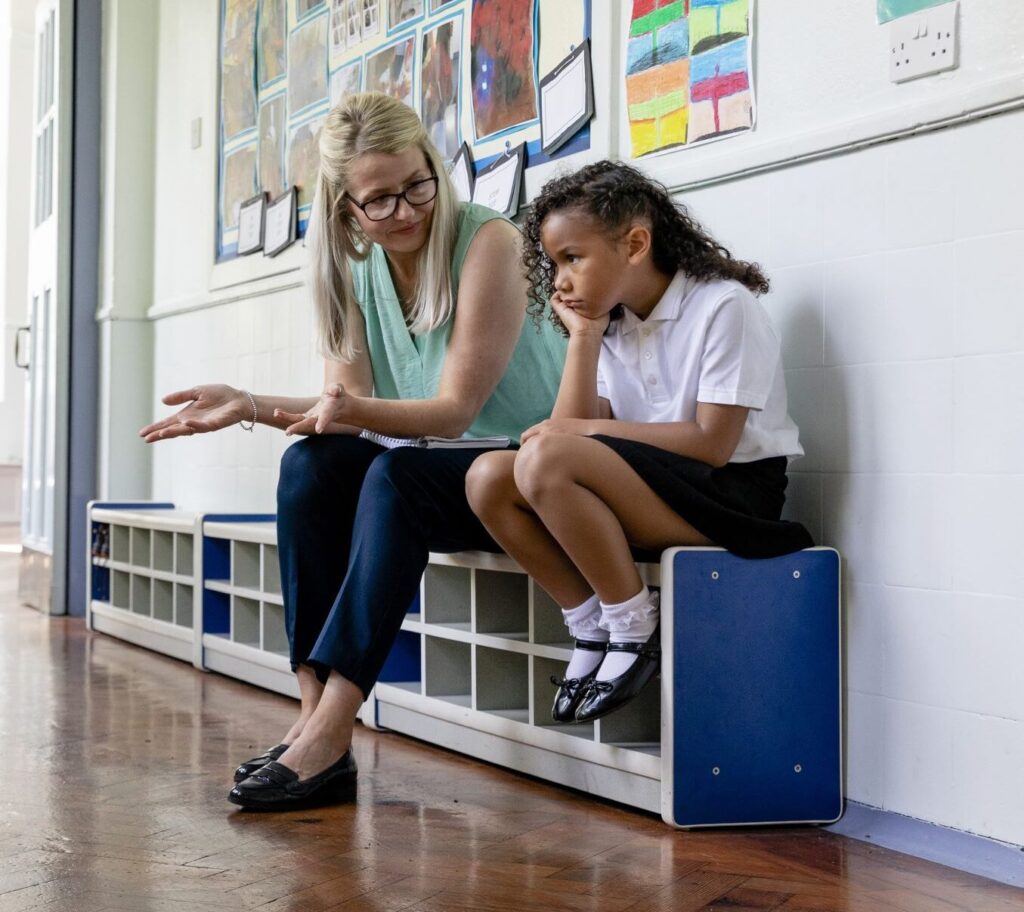There are lots of different terms, acronyms and abbreviations that you may hear as a parent having conversations with teachers and health providers about a child or young person with special education needs and/or disabilities (SEND). To help you make sense of the language used, we’ve put together this SEND glossary.
Preferred language and terminology can change quite frequently, and we also recognise that the particular language people use to define themselves is often very personal. How you might choose to define yourself is entirely up to you, but that also means it’s important to be mindful that this might be different for somebody else.
Equally, just because someone has had a particular diagnosis, it doesn’t necessarily mean that’s how they want to be identified. Family Action services who work with people with SEND say that these individuals often prefer to have a conversation about the language they’re comfortable with rather than avoiding the topic – although this might not apply to everyone.
The one situation where you might need to use very specific language regardless of personal preference is if you are talking to someone who works with children or young people with SEND. For example, if you’re looking for a diagnosis or for support relating to a diagnosis, this is usually where very specific language is used. Since these terms are often jargon to parents, we’ve put together this SEND glossary of some of the most commonly used terms and abbreviations.
It’s worth noting that different local authorities use different terms for some things. While we’ve done our best to make this list as comprehensive as possible, this may mean the list doesn’t cover a term you’re looking for, because it’s more commonly known by another name elsewhere.
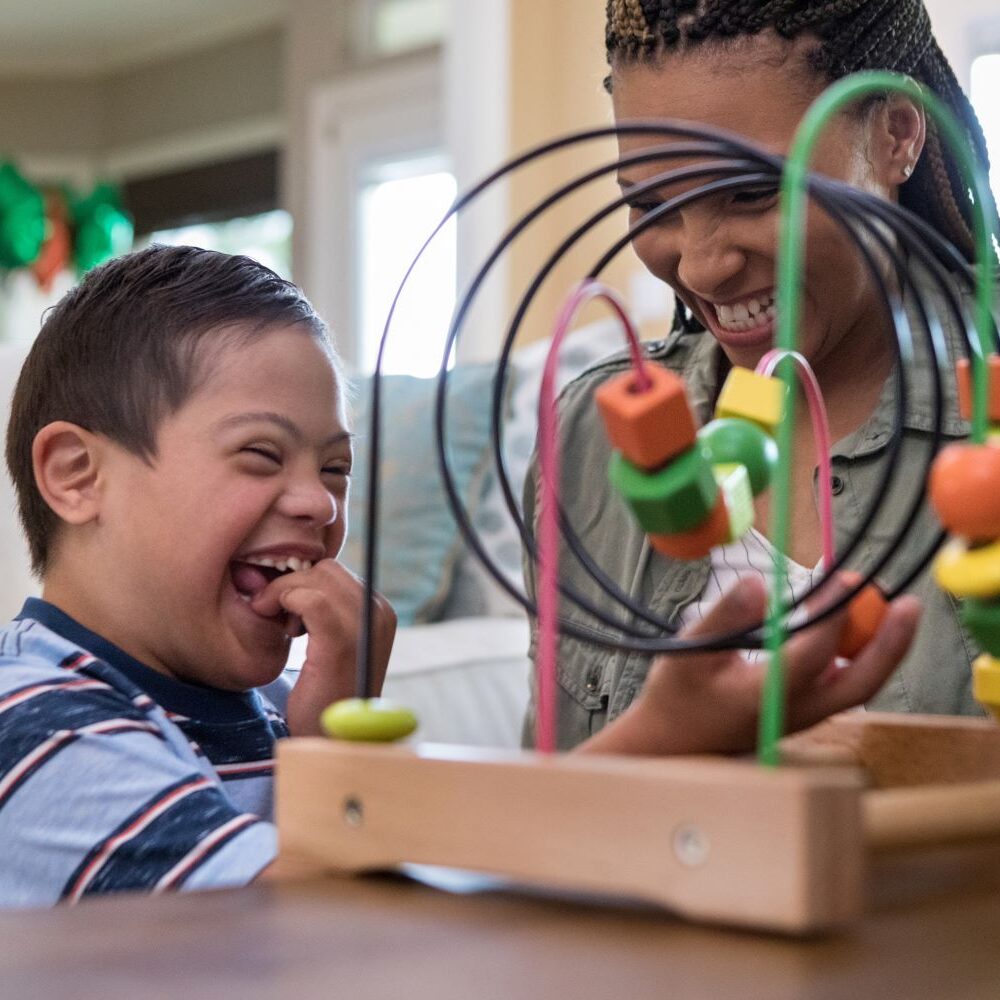
Academy: A state-funded independent school. Academies have more control over how they run themselves than maintained schools – for example, they can set their own term times and don’t have to follow the national curriculum.
Attention deficit disorder (ADD): A form of ADHD. ADD can be less obvious than ADHD as individuals’ concentration and focus is affected but there’s no hyperactivity or impulsiveness. See also Attention deficit hyperactivity disorder (ADHD).
Attention deficit hyperactivity disorder (ADHD): A condition that affects behaviour, concentration and focus. People with ADHD may also act impulsively or seem restless. See also Attention deficit disorder (ADD).
Alternative provision: Section 19 of the Education Act 1996 states that, if a child cannot go to a mainstream school for reasons including illness, behavioural difficulties or exclusion, the local authority must provide full-time alternative education. This is what the term ‘alternative provision’ refers to. See also Pupil referral unit (PRU).
Area of need: The SEND Code of Practice sets out four categories that must be considered when supporting and educating children with SEND:
- Communication and interaction
- Cognition and learning
- Social, emotional and mental health
- Sensory and/or physical needs
Autistic spectrum condition (ASC) / Autistic spectrum disorder (ASD): Also known more simply as autism, this is a processing difference that can affect learning, communication, sensory processing, and social interactions. A related term is Asperger syndrome, which used to be a diagnostic term in its own right but is now generally considered to be part of the autism spectrum.
Assistive technology: A broad description for technology or equipment designed to help those with disabilities or impairments carry out tasks that might otherwise be difficult or impossible.
CAMHS: This stands for Child and Adolescent Mental Health Services. CAMHS is a service provided by the NHS that supports and treats children and young people with behavioural, emotional, and mental health difficulties.
Care, education and treatment review (CETR): This meeting is organised when a child or young person with a learning disability is considered at risk of being admitted to a mental health inpatient hospital. The aim is to review support and see what can be done to help the individual stay in their home and community.
Code of practice: Government guidelines covering the duties of anyone who supports children and young people with SEND, including local authorities, schools, colleges and health services.
CYP: This means children and young people. In SEN law, this is anyone from birth to the age of 25. See also YP.
Designated safeguarding lead (DSL): The person responsible for child protection issues in any organisation that works with children, such as schools, nurseries and GP surgeries.
Early help assessment: Assesses a family’s needs and the support that can help early on, before needs intensify.
Early intervention: The support offered to a child when a need is first identified by an Early help assessment (see above).
Early years foundation stage (EYFS): This begins when a child turns three. Many children go to an early education setting (for example a nursery, pre-school or playgroup). The foundation stage continues until the end of reception year, and prepares children for year one, when key stage 1 begins (see also Key stage below).
Educational psychologist (EP): A specialist in how children learn, who is involved in assessing and supporting children with developmental or learning difficulties.
Education, health and care needs assessment (EHCNA): The local authority uses this to decide if a child or young person needs an Education, health and care plan (see below). The child or young person can contribute to this, along with anyone who supports them.
Education, health and care plan (EHCP): A legally binding document the local authority creates after carrying out an Education, health and care needs assessment (see above). It outlines a child or young person’s education, health and social care needs.
Education other than at school (EOTAS): If going to school full-time isn’t in the best interests of a child, for physical or mental health reasons, and you aren’t home schooling, the local authority may provide an alternative. This will be set out in an EHCP (see above) and continuing to provide this is the LA’s responsibility.

Elective home education (EHE): Also known as home schooling, this is where a parent chooses to educate their child at home instead of having them go to school.
Emotional literacy support assistant (ELSA): Trained and supervised by educational psychologists, ELSAs work with children and young people in school to support their emotional wellbeing either individually or in small groups.
English as an additional language (EAL): This term describes children who are learning English in addition to their native language. They may have no difficulties with understanding or learning, but they may need additional support while they learn English.
Exclusion: Temporarily or permanently removing a child from school.
Further education (FE): This refers to education that’s above compulsory school level but below degree level. There are lots of different FE courses – use the National Careers Service course finder to find out more.
Graduated approach: This is an ongoing four-stage cycle used in education settings to identify a child’s needs and ensure the support offered meets those needs. The steps are:
- Assess: Assess the child’s needs.
- Plan: Plan the support that will be put in place to meet those needs.
- Do: Carry out the plan and monitor the child’s progress.
- Review: Review the effectiveness of the support and identify any adjustments that might be necessary.
High needs funding: This refers to additional funding the local authority pays directly to the school to support pupils with Education, health and care plans (see above).
Hypersensitive: ‘Hyper’ means above or over, so hypersensitive individuals experience sensory overstimulation very easily. Places where there is a lot going on (for example, a shopping centre with lots of people, conversations, music, food smells or scented candles and perfumes) can be too much.
Hyposensitive: ‘Hypo’ means below or under, so hyposensitive individuals have a reduced response to what they experience through their senses. They may be drawn to bright lights, loud sounds and music, and they may punch and push to get the sensory stimulation they need.
Individual education plan (IEP): This is a document that schools may use to plan and review how children and young people with SEND are educated. It may also be known as a SEND Support Plan, Pupil Passport or One Page Profile.

Independent school: This is a school that isn’t run by a local authority and is either:
- mainstream (also called non-maintained, fee-paying or private schools); or
- specialist (also called non-maintained specialist schools). Specialist schools are funded through an EHC plan.
Inclusion: This refers to educating children with SEND in mainstream schools alongside others in their age group, instead of in special schools.
Information, advice and support service (IASS): Provides free information, guidance and support to children and young people with special educational needs and/or disabilities from birth to the age of 25, and their families. Every local authority has one. See also SENDIASS.
Key stage (KS): A stage of education. Key stages are divided up as follows:
- Key stage 1: age 5-7 (school years 1-2)
- Key stage 2: age 7-11(school years 3-6)
- Key stage 3: age 11-14 (school years 7-9)
- Key stage 4: age 14-16 (school years 10-11)
- Key stage 5: age 16-18 (school years 12-13)
Learning difficulty: A broad term for challenges with learning. These could relate to one or more of the following: maths, reading, writing, or comprehension (the ability to understand something).
Local authority (LA): The body responsible for services in its local area, including providing education and SEND support.
Local offer (LO): This document, often published on a local authority’s website, explains the support that’s available for children and young people with special educational needs and/or disabilities, and their families. In some areas you might see this called the SEND Information Hub.
Looked after children (LAC): This refers to children under the age of 18 who were cared for by children’s services.
Mainstream school: A school for all children, with or without special educational needs or disabilities. This could be a Maintained school (see below) or Academy (see above).
Maintained school: Any school that’s funded and controlled by a local authority.
Neurodivergent: An umbrella term for individuals who have a mind that functions differently to what is considered the norm, including how they learn, process, interpret and feel.
Neurodiverse: This refers to a group of individuals who represent the spectrum of neurodiversity, including neurotypical and neurodivergent individuals. An individual cannot be neurodiverse – individuals who aren’t neurotypical are neurodivergent. See also Neurodivergent and Neurotypical.
Neurodiversity: The natural diversity of human minds. Neurodiversity covers every individual, from neurodivergent to neurotypical. See also Neurodivergent and Neurotypical.
Neurotypical: Neurotypical people have a mind that functions within what society considers the norm. Neurotypical is the opposite of Neurodivergent (see above).
Ordinarily available provision: This refers to the support mainstream education settings should provide for children and young people, including those with SEND, using their agreed funding.
Occupational therapy (OT): A type of therapy that helps children carry out everyday tasks such as getting dressed or writing.
Parent carer forum: A group of local parents and carers who work with organisations like education and health providers, and local authorities, to help make their services appropriate and useful for disabled children and their families.
Parental contribution: The involvement of parents in planning and making decisions about a child’s education.
PR EHCNA: This means ‘parental request for an education, health and care needs assessment’. See also Education, health and care needs assessment (EHCNA) above.

Pupil referral unit (PRU): Alternative education provided by the local authority according to Section 19 of the Education Act 1996. This is provided for children who cannot go to a mainstream school, generally after permanent exclusion. See also Alternative provision (see above).
Reasonable adjustments: Changes schools make to ensure all pupils are able to learn there. Examples might include installing a ramp or offering extra support.
SEN/SEND: This stands for special educational needs/special educational needs and disabilities, and both terms are commonly used. Children with SEND/SEN have a disability or learning difficulty that means they need different or additional educational support than that provided as standard for other pupils of their age.
SEN support: A broad term for a wide range of possible additional support for a child with special educational needs. This will vary depending on the individual child’s needs.
SEND information report: The up-to-date information schools are required to publish on their websites explaining their policy for supporting children with SEND.
SENDIASS: This stands for special educational needs and disabilities information, advice and support service. You might also see it written as ‘SENDIAS service’. See also Information, advice and support service (IASS).
Social care provision: Support that helps people live in their own home or be able to get out in the community.
Special educational needs co-ordinator (SENCO): A teacher who manages the support offered by the school for children with SEND.
Special school or specialist setting: A school that’s set up to educate children or young people with an EHCP.
Speech and language therapy: Therapy for a child or young person who needs support with speech, language or communication. This is provided by a speech and language therapist, which is sometimes shortened to SALT.
Teaching assistant (TA): A member of school staff who supports children in the classroom.
Team around the child (TAC): A group of professionals who work together to develop and deliver support to a child or young person that fits their individual needs.
Transition plan: This covers the needs of a child or young person and the support that will be provided to help make their transition to a new class, year group or education setting as smooth as possible.
YP: This stands for young person, and in SEN law this refers to anyone who has finished compulsory school (the end of the school year they turn 16 – most commonly this is year 11) but is under 25.
For more information
If you need more information or guidance beyond what’s in this SEND glossary – particularly if you have any specific questions about your own family or situation – contact your local SENDIAS service. Find out if there’s a Family Action SENDIAS service in your area with our service finder. If there isn’t a Family Action SENDIASS in your area, you can find your local IAS service here.
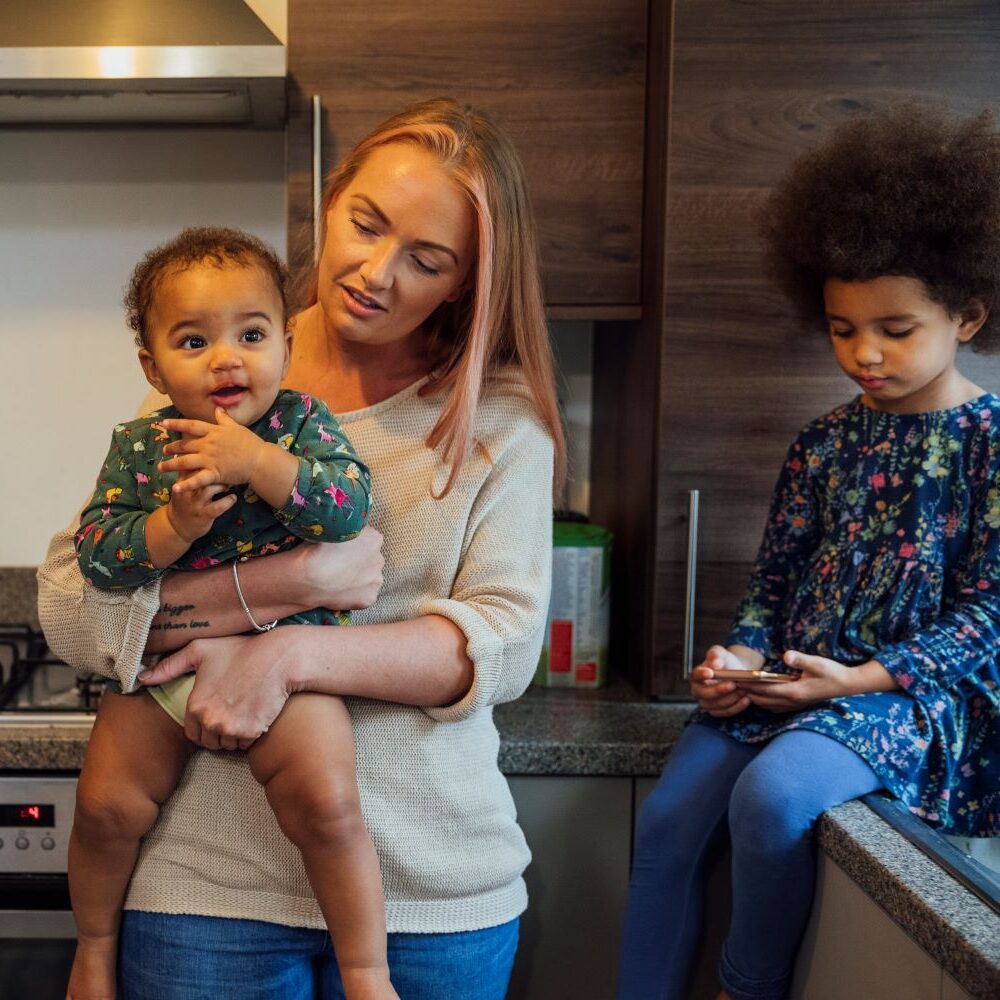
Call, text, email or web chat FamilyLine
If you’re feeling overwhelmed, worried or upset about any aspect of your family life, FamilyLine is here for you. We offer free emotional support and guidance on family relationships, conflict, parenting, caring, financial worries and more.
Contact FamilyLine
